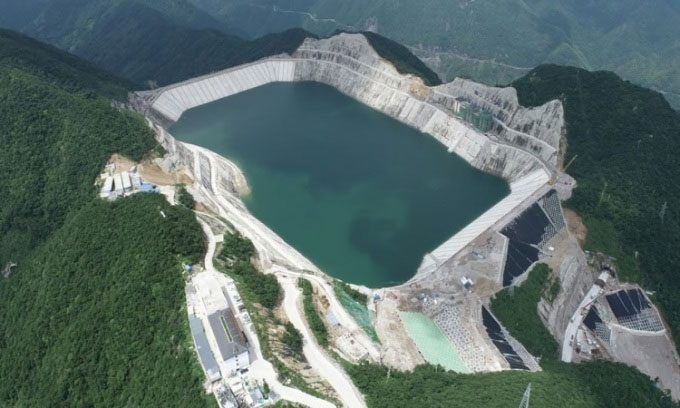China Launches Hydropower Project in Qinghai, Significantly Enhancing Renewable Energy Production in the Gobi Desert and Tibetan Plateau.
Construction began on August 6 to build the largest pumped storage hydropower plant in the region of Qinghai Province. This hydropower project is expected to have a maximum installed capacity of 2.8 gigawatts (GW) once operational.

China is actively constructing pumped storage hydropower plants. (Image: SCMP).
The power plant features two water reservoirs that act as giant batteries, releasing water from the upper reservoir to generate electricity during peak demand and pumping water back using renewable sources when demand is low. Located in the eastern part of Qinghai Province, the facility utilizes the Laxiwa Reservoir on the Yellow River as its lower reservoir. The Qinghai power plant will be operated by the State Grid Corporation of China, as part of a series of projects in the province aimed at enhancing grid reliability.
Qinghai boasts the highest installed capacity for renewable energy among provinces in China. The province’s grid comprises 28% hydropower, complemented by wind and solar energy (which accounts for 63%). By 2030, it is estimated that the province will exceed 100 GW of wind and solar power, which is 3.5 times its current installed capacity. However, a significant challenge for these two types of renewable energy is that peak production does not coincide with peak electricity consumption, leading to a demand for storage to utilize generated electricity more flexibly.
There is increasing pressure to provide storage solutions to meet the growing peak electricity demands in Qinghai. Pumped storage hydropower is particularly well-suited for a grid dependent on wind and solar power since the system can absorb and release energy based on demand, according to the International Hydropower Association. Liu Yongqi, director of the new energy and pumped storage department at the State Grid Corporation, stated that the new plant will fill the gap in pumped storage hydropower in Qinghai and play a significant role in providing stable energy to the grid.
The Warang Station will have a storage capacity of 20 million kilowatt-hours and will connect to the Qinghai grid via a 750-kilovolt transmission line, according to the National Energy Administration (NEA). Once the Warang plant is operational, the level of storage it provides will help reduce carbon dioxide emissions by 5 million tons annually and improve energy transmission from surrounding wind and solar power plants. The Warang plant is being constructed alongside three other projects to provide electricity to 650,000 people.
The NEA prioritizes the development of pumped storage hydropower projects to help China achieve its carbon neutrality goals. According to plans from 2021, the country aims to reach a pumped storage hydropower capacity of 62 GW by 2025 and 120 GW by 2030. These targets include the construction of 200 pumped storage facilities with a total capacity of 270 GW by 2025.


















































